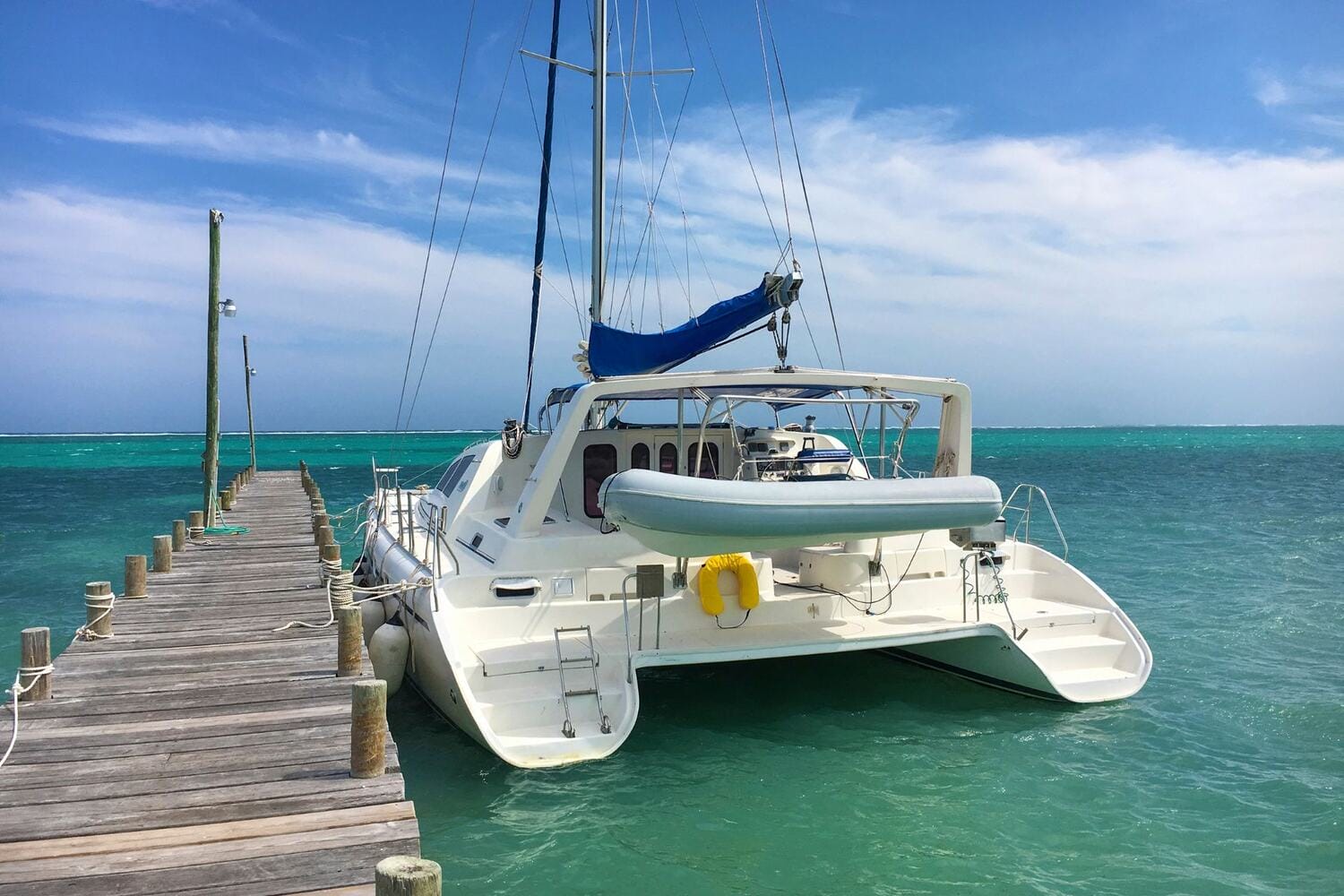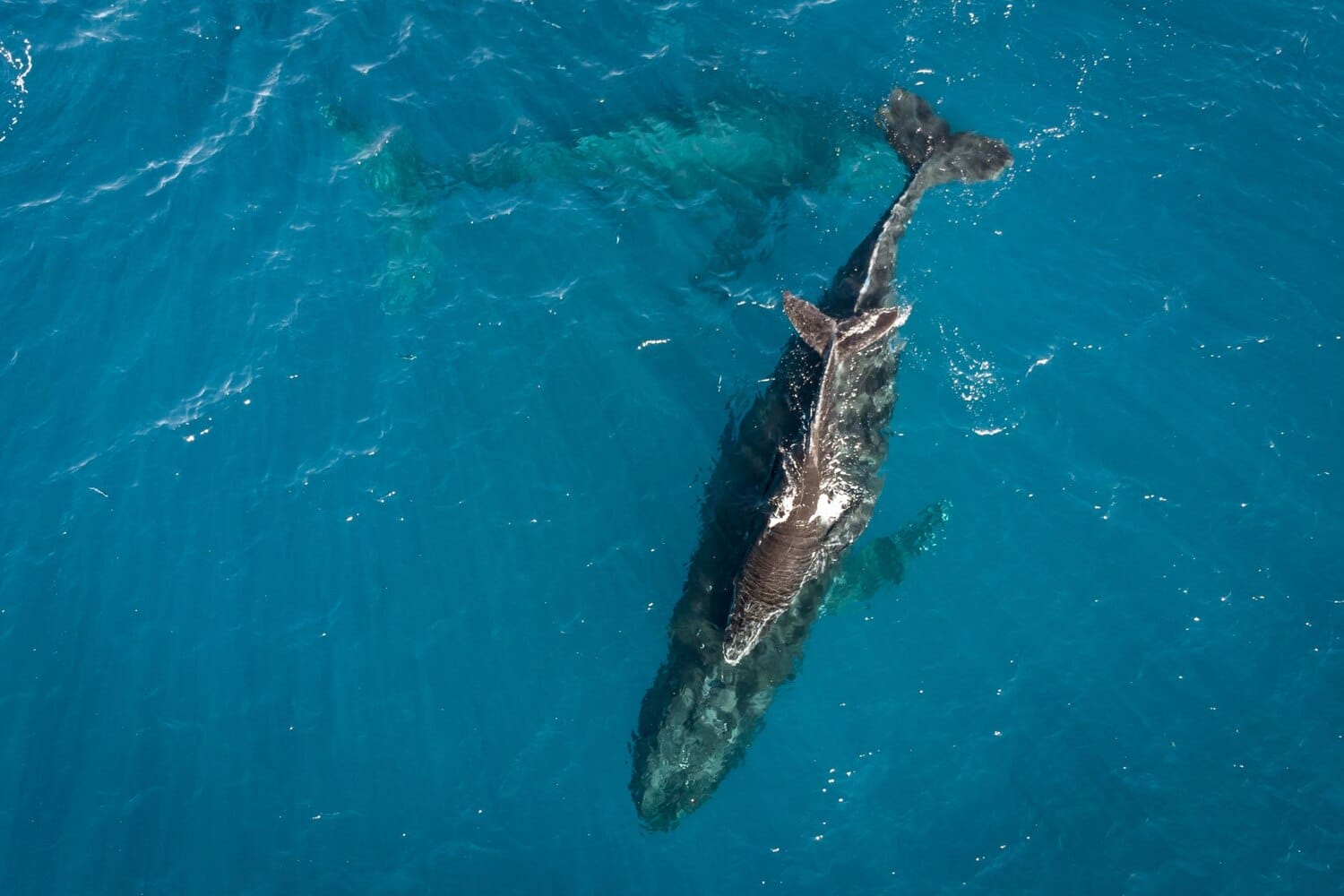Whale Watching in Maui: The Best Spots and Tours in 2024


Aloha! | E Komo Mai
Ready to see humpback whales breaching in their natural habitat? From December to May each year, the best time to whale watch in Maui, thousands of humpback whales migrate from the icy Alaskan waters to the warm Auau channel between Maui, Molokai, and Lanai.
For many visitors, seeing the whales up close is the highlight of their Hawaiian vacation, and we’re confident it will be yours too.
But unless you join a whale-watching tour, you won’t the best spots for whale watching in Maui – And that’s where we come in.
In this guide, we’ll share some tips on where to find great spots to see this unique wildlife in Maui and how to make the most of your time on the island during whale-watching season.

The Perfect Whale-Watching Spots on Maui
You can technically see these marine mammals from any Hawaiian island but Maui is the prime spot. Why? Because the Auau Channel between Maui, Molokai, and Lanai is their favorite place.
Imagine yourself on Maui’s west side (the leeward coast) with whales breaching right offshore.
To really make the most of your Maui whale-watching experience you have two options. You can stay on dry land and watch from afar or get out on the water with a guide and get up close.

Best Maui Whale-Watching Spot on Land
1. McGregor Point (Honoapiilani Hwy, near Ma’alaea)
McGregor Point is one of the best places in Maui to watch whales from land. Just a short drive from Maalaea, this viewpoint has big ocean views and is a great spot to see humpback whales during their migration season from December to April.
You can see whales breaching and playing in the distance from the elevated viewpoint.
McGregor Point also has telescopes and whale info signs to help you enjoy your viewing experience.
It’s an easy stop along Honoapiilani Hwy with parking and access, and you definitely won’t be disappointed.
2. Papawai Scenic Lookout (Honoapiilani Hwy, near Ma’alaea)
Right next to McGregor Point, Papawai Scenic Lookout is another great spot to watch whales on Maui.
This lookout has big ocean views and is a great place to see humpback whales playing and breaching during their winter migration.
It’s a great stop for both tourists and locals, and it’s well-marked from Honoapiilani Hwy, which means it’s very easy to find. You can see whales spouting, tail slapping, and breaching especially in the morning when the ocean is calm.
Papawai Scenic Lookout also has whale info signs to help you learn more about the whales and their migration patterns. With parking and great views, this is a great place to go whale-watching in Maui.
3. Olowalu Beach and Roadside (South of Lahaina)
Seeing them from Olowalu Beach is a unique and chill whale-watching experience. Just south of Lahaina, these beaches have sandy shores where you can lounge and watch whales from the shore.
The clear calm waters and beachy setting are perfect for families and beach lovers. As you’re soaking up the sun, keep an eye out for the humpback whales. The roadside nearby also has good views for those who want to stay on land.
Olowalu is less crowded than some other beaches in Maui so it’s a peaceful spot to enjoy the natural beauty and whale watching.
4. Hawaiian Islands Humpback Whale National Marine Sanctuary Visitor Center
In Kihei, the Hawaiian Islands Humpback Whale National Marine Sanctuary Visitor Center is a must-visit for whale enthusiasts. The center has a lot of information and exhibits about the humpback whale sanctuary, marine conservation, and the whales’ life cycle.
The beachfront location has front-row seats to watch whales breaching just offshore. The Visitor Center also has educational programs and talks so it’s a great place to learn more about these amazing creatures.
Spend a couple of hours exploring the exhibits and then head outside to watch the whales in their natural habitat.
5. Ka’anapali Beach Walking Path
The Ka’anapali Beach Walking Path is a beautiful path from Black Rock to the Hyatt on the south side of Kaanapali and is a great spot to watch whales.
This path is exercise and nature combined with ocean views where you can see humpback whales breaching and playing. Put on your walking shoes, sunscreen, and binoculars and you’ll have a great time.
The path is well-maintained and has plenty of spots to stop and rest while you’re looking for whales. Walking the Ka’anapali Beach at sunset is extra special as the whales’ silhouettes against the setting sun are a sight to behold.

Best Maui Whale-Watching Tours
While watching from the shore is enough for some people, joining a whale-watching boat tour on Maui gets you front-row seats, and that’s one of the reasons you’re in Maui for!
Here are some excellent options.
Catamaran Whale Watching
Catamarans are popular for whale-watching tours. They can carry large groups, which means it’s great for most people, including couples and families.
Catamaran whale-watching tours make sure everyone gets a great view.
You can enjoy the lively atmosphere with knowledgeable naturalists and comfortable amenities, it’s a fun trip.
Sailboat Whale Watching
A smaller more personal experience, sailboat tours carry up to 60 passengers and create a peaceful setting and a better experience.
There are a few sailboat tours during the day but we recommend joining an early-morning one for higher chances to spot the whales!
Raft Whale Watching
Whale-watching by raft is an adrenaline rush. Smaller, faster vessels zip across the water and get you up close to the surface for a different whale-watching perspective.
These usually last about 2 hours and include a snorkeling session. It’s a more personal tour compared to taking a catamaran or a sailboat, and you’ll have the whales right in front of you!
Kayaking Whale Watching
Ever want to combine physical activity with stunning views? Kayaking with whales in Maui does just that.
These tours give you an unforgettable whale-watching experience by letting you get as close as it gets to the creatures. These tours normally last between 2 and 4 hours and are a great option that will guide you and teach you everything you need to know about paddling.
Outrigger Canoe Whale Watching
Imagine paddling alongside whales in a traditional Hawaiian outrigger canoe – it doesn’t get more local than that.
Powered by your own arm strength (and the expertise of your guides) this is the ultimate way to interact with these marine giants.
Like a kayak tour, this won’t cover as much ground, and they last about 2 hours. While it may sound scary at first, you don’t need any prior experience to join and have fun!

What to Expect on a Maui Whale-Watching Tour
Now you know the best places to view whales on land and sea. But did you know that 12,000 whales migrate from Alaska to Hawaii every year? You’ll probably see them from a distance if you’re on Maui during whale season.
Let’s get into the cool behaviors you might be lucky enough to see at the top 5 whale watching spots on Maui Hawaii. To get started, book a whale-watching tour.
Most whale-watching tour operators offer guaranteed sightings from December to May. So you’ll know you won’t miss the magic. Here are some key moments:
Mugging: This is when a curious humpback whale comes up to the boat for a closer look. While boats must stay 100 yards away, sometimes these gentle giants decide to get up close. Imagine being the subject of a humpback whale’s curiosity!
Spy Hopping: This is when a whale pokes its head above the water to take a look around. We’re not sure why they do this but it’s believed they’re gathering sensory information. Seeing a whale’s eyes pop out of the water is pretty cool.
Breaching: Imagine a 35-ton whale jumping out of the water and splashing back down. Breaching is the coolest and most popular whale-watching activity.
Blowing: Every 15-20 minutes, humpbacks surface to breathe and create a plume of water up to 20 feet high. These “blows” are caused by the whales exhaling hot air and water vapor from their blowholes. Seeing a blow is often the first sign whales are near.
Pec Slapping: Imagine a whale lifting its massive pectoral fins and slapping the water. These fins are up to 16 feet long and create a big splash. Females use this behavior to attract males but there’s probably more to it.
Tail Slapping (Tail Throw): A whale arches its back, exposes its tail, and crashes it down sometimes making a loud sound. This behavior can mean aggression, excitement, or playfulness and the intensity varies with each whale.
Whale Song: Male humpbacks are famous for their beautiful songs which can be heard for miles underwater, and you’re most likely going to hear it!
Remember, there’s no specific time of day to see whales – you might see them in the morning or late afternoon, but the best time is in the morning.
With guaranteed sightings and free repeat trips, if you don’t see whales, it’s best to book your whale-watching tour early in your trip so you have higher chances.

Conclusion:
Maui has many places to see the whales and fun tours to join. These spots on Maui Hawaii give you onshore and boat-based options so no matter your style, time, or budget, you can have an amazing experience.
Whether you see their breach from shore, listen to their song from a kayak, or find yourself 100 yards from a spy-hopping gentle giant, these island experiences will be unforgettable.
Frequently Asked Questions
What to Take on a Whale-Watching Tour in Maui?
There are several items we recommend when joining a whale-watching tour in Maui, Hawaii, and you’ll want to remember them:
- Binoculars
- Sunglasses & Hat
- Reef-Safe Sunscreen
- Light Jacket (morning tours)
- Towel (boats/rafts can get wet)
- Waterproof Camera or Go-Pro
- Seasickness Medication (if needed)
What Kind of Whales Migrate to Maui?
The North Pacific humpback whale migrates to the waters of Maui. Known for their acrobatic leaps and underwater music, this population travels 3,500 miles from the cold Alaskan waters to the warm waters around Maui to birth and mate.
What Kind of Boat for Whale-Watching Tours?
There are many whale-watching tours on Maui and with so many options, there’s something for everyone.
If you prefer a bigger group, then a catamaran or a sailboat is a great choice. Alternatively, taking a raft, a kayak, or an outrigger canoe is a good option and you’ll get closer to the whales.
Share:
